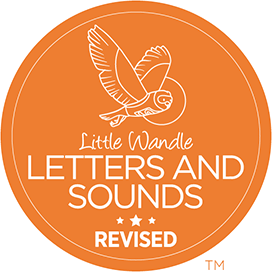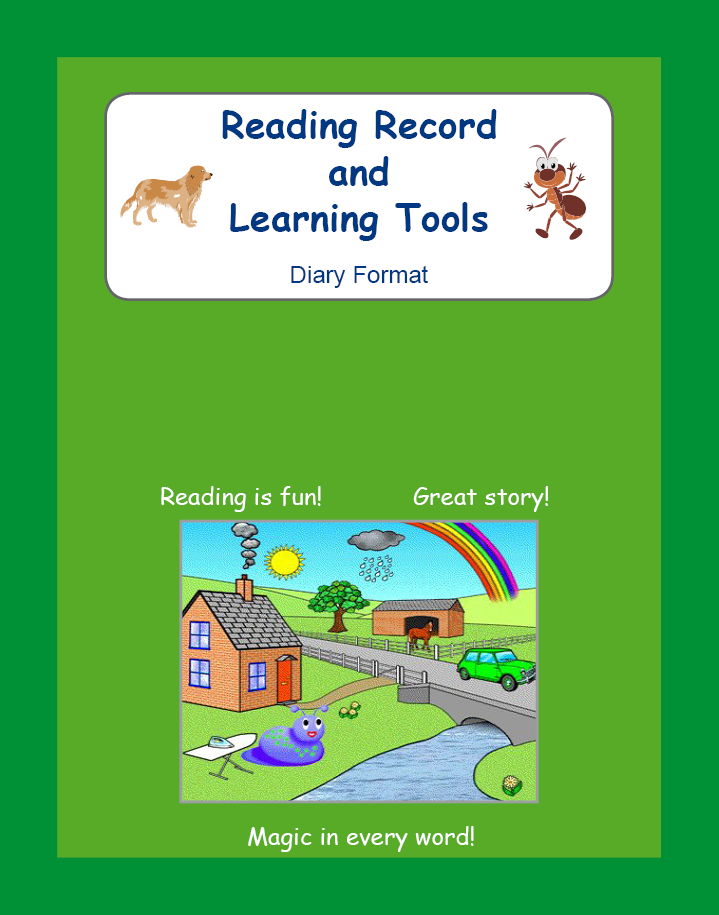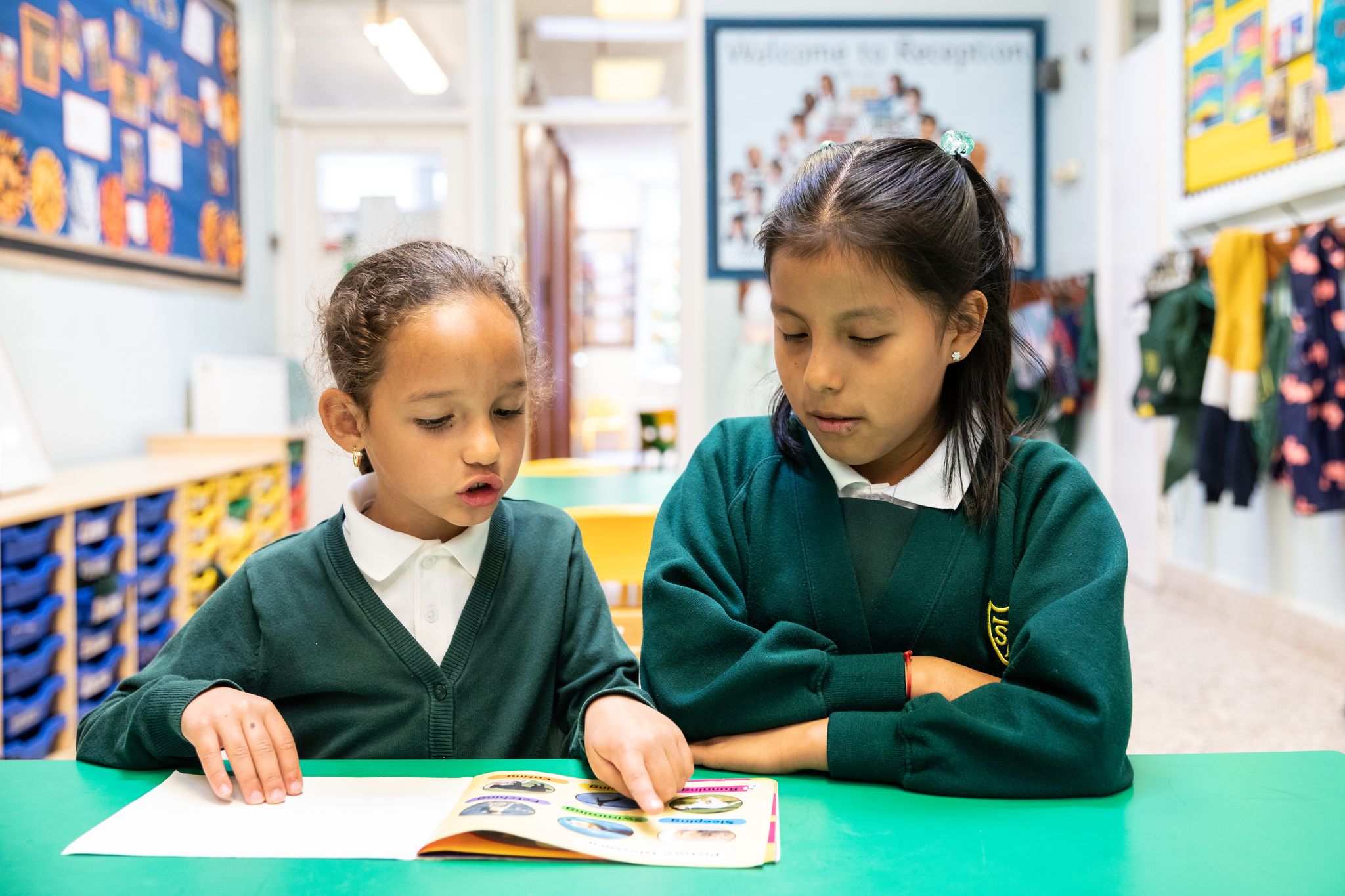Phonics and Reading Intent
What is phonics?
Phonics is a way of teaching children to read quickly and skilfully. They are taught how to:
- recognise the sounds that each individual letter makes;
- identify the sounds that different combinations of letters make - such as ‘sh’ or ‘oa’; and
- blend these sounds together from left to right to make a word.
Children can then use this knowledge to ‘de-code’ new words that they hear or see. This is the first important step in learning to read.
Why phonics?
Research shows that when phonics is taught in a structured way – starting with the easiest sounds and progressing through to the most complex – it is the most effective way of teaching young children to read. It is particularly helpful for children aged 5 to 7.
Almost all children who receive good teaching of phonics will learn the skills they need to tackle new words. They can then go on to read any kind of text fluently and confidently, and to read for enjoyment. Children who have been taught phonics also tend to read more accurately than those taught using other methods, such as ‘look and say’. This includes children who find learning to read difficult, for example those who have dyslexia.
Did you know . . .
A phoneme is the sound a letter or a group of letters make (there are 44). A grapheme is what the phoneme looks like (it could be represented in more than one way e.g. ai ey ay). A digraph is when two letters come together to make a phoneme (‘oa’ as in boat). A trigraph is when three letters come together to make one phoneme (‘igh’ as in high). A split digraph is when a vowel digraph is split by a consonant letter (e.g. ‘ae’ in make). Segmenting consists of breaking words down into phonemes to spell. Blending consists of building words from phonemes to read.
How do we teach phonics at St Ignatius?
Please find below information regarding our new phonics scheme - Little Wandle

Powerpoint for Parents- Little Wandle Year 1 Meeting- October 2024
Why learning to read is so important:
- Reading is essential for all subject areas and improves life chances.
- Positive attitudes to reading and choosing to read have academic, social and emotional benefits for children.
How children learn to read:
- Phonics is the only route to decoding.
- Learning to say the phonic sounds.
- By blending phonic sounds to read words.
- Increasing the child’s fluency in reading sounds, words and books.
Reading fully decodable books:
- Children must read books consistent with their phonic knowledge.
- It is essential not to use other strategies to work out words (including guessing words, deducing meaning from pictures, grammar, context clues or whole word recognition).
- Books must be fully decodable and follow the Little Wandle scheme
- Children need to read books in a progressive sequence until they can decode unfamiliar words confidently.
The role of Parents’ and Carers’:
- Have a positive impact on their child’s reading.
- Should model the importance of reading practice to develop fluency.
- Children take home books they have read at school to re-read at home to build fluency.
- There are two different types of books that pupils bring home: reading practice and books to share for pleasure.
- Reading at home encourages a love of books, along with developing vocabulary and discussion.
- Parents should use voices, expression, discuss unfamiliar vocabulary, talk about the pictures, and predict what might happen next.
- Give positive yet informative feedback in the home reading diary at least 3 times a week
Supporting your child with reading:
Although your child will be taught to read at school, you can have a huge impact on their reading journey by continuing their practice at home.
There are two types of reading book that your child may bring home:
1) A reading practice book- This will be at the correct phonic stage for your child. They should be able to read this fluently and independently.
2) A sharing book- Your child will not be able to read this on their own. This book is for you both to read and enjoy together.
Reading practice book
This book has been carefully matched to your child’s current reading level. If your child is reading it with little help, please don’t worry that it’s too easy – your child needs to develop fluency and confidence in reading.
Listen to them read the book. Remember to give them lots of praise – celebrate their success! If they can’t read a word, read it to them. After they have finished, talk about the book together.
Sharing book
In order to encourage your child to become a lifelong reader, it is important that they learn to read for pleasure. The sharing book is a book they have chosen for you to enjoy together.
Please remember that you shouldn’t expect your child to read this alone. Read it to or with them. Discuss the pictures, enjoy the story, predict what might happen next, use different voices for the characters, explore the facts in a non-fiction book. The main thing is that you have fun!
Programme Overview- Reception and Year 1
Phase 2 sounds taught in Reception Autumn 1
Phase 2 sounds taught in Reception Autumn 2
Phase 2 sounds taught in Reception Spring 1
How we teach blending
Quick guide to Alien words
How we teach tricky words
Resources for Parents- Little Wandle
For more information about Little Wandle- please click on the link below:
https://www.littlewandlelettersandsounds.org.uk/resources/for-parents/
Parents and carers! If you have bought the Little Wandle at Home Phonics Flashcards don’t forget to check out four fun games to play with your children on the Collins website.
https://collins.co.uk/pages/little-wandle-at-home
Phonics Screening Check
The National Phonics Screening Check is a quick and easy check of your child’s phonics knowledge. It helps school confirm whether your child has made the expected progress and helps teachers identify which children need extra help with phonic decoding. It is for Year 1 children and it takes place in the Summer term. The check contains a mix of real words and ‘non-words’ (or ‘nonsense words’). The purpose of including nonsense words is to check that the child knows the sounds and can blend them together to read the words. They will be new to all pupils, so there won’t be a bias to those with a good vocabulary knowledge or visual memory of words. Children who have not met the standard in Year 1 will retake the check in Year 2.
Useful websites:
https://www.jollylearning.co.uk/jolly-phonics/
https://www.oxfordowl.co.uk/
https://www.phonicsplay.co.uk/
Reading:
What is our INTENT for Reading at St Ignatius?
If children can read, they have the capacity to learn anything.
At St Ignatius, we strive to develop a love of books that allows children's world to open up, through our ethos, attitudes and practices. Enthusiasm and engagement, intertwined with a well-planned and structured approach to discrete teaching of the skills, leads to developing lifelong readers.
Reading is at the heart of our curriculum and we build time for children to share texts at an individual, group and whole class level, in all of our subjects.
High quality resources, exciting opportunities and a healthy daily diet all support children to reach their potential.
What does our IMPLEMENTATION for Reading look like at St Ignatius?
We encourage our children to read and share texts as individuals, groups and as a whole class. Please do also see our 'Reading for Pleasure' page.
Individual reading:
1. We continue to heavily invest in diverse, engaging and phonic/ability matched individual reading books to ensure that all children develop and sustain a love of reading and positive attitudes towards their own abilities.
2. Children speak very highly of the reading books and show genuine interest and enthusiasm. E.g children have a 'Recommended Books' section in their book corners where children have to write regular reviews and rate books that they have read. The children will write a short synopsis of a book they have read and enjoyed, in order to inspire others to read it.
3. We develop engaging reading areas for children to select and explore fiction, non-fiction and poetry. In every book corner there is a selection of carefully chosen fiction and poetry books from our own developed school reading spine. Each class are expected to choose a 'Poem of the week and in Early years they choose 'Rhyme of the week'.
4. We use the Little Wandle early reading and phonics approach in EYFS and KS1 (and target children in KS2). Staff have received high quality training and have worked hard to embed the scheme into their daily schedule.
5. We regularly monitor children's progress through teacher assessment, Little Wandle assessments, NFER reading comprehensions and respond accordingly.
6. We celebrate success and effort. In each class pupils are currently taking part in the 'Reading Challenge' to read as many books as possible.
Literacy Leaves:
Within Literacy Tree we use the Literary Leaves aspect as our whole class approach to reading comprehension in Key Stage 2 which involves a daily 40-minute session. We grow literary knowledge and develop skills by using whole books, rather than extracts, promoting a love of learning and an eagerness to read similar texts. Many of our texts link to aspects of other curriculum subjects, leading to deeper thinking and further discussion.
Literary Leaves use carefully selected novels, poetry collections and high-quality, non-fiction books that connect to our Writing Roots through literary themes. Through this, children are taught the key skills of reading comprehension including: predicting, clarifying, evaluating, inferring, making connections and comparisons, summarising and questioning. They also develop an understanding of how to apply these in a wider range of contexts. Our aim is that all children will become independent, critical readers.
Whole Class Reading:
Each afternoon every class will share a 'class text' chosen by the class, which is often voted for by the children. The teacher will read aloud to the pupils. These books might also come from our school reading spine, which is based on Pie Corbett's reading spine but is regularly added to with a variety of age appropriate and culturally diverse books, which are available for pupils to read. Time is also made each week for 'book club' where pupils discuss their favourite reads/authors and new and trending books. At St Ignatius the class teacher is very much seen as an 'influencer' to inspire and excite pupils about reading.
The 'Writing Roots' from Literacy Tree are used in English lessons- see the 'Writing' page for more details. It allows children to be exposed to high quality texts, which they explore thoroughly, considering the layout, language features and sentence structures of a range of genres.
We use resources such as Reading Eggs, Fast Phonics etc to support reading further.
Group reading:
1.Children also have opportunities to have tailored group reading time to allow teachers to support target groups to further identify a particular skill.
2. Staff in EYFS and KS1 follow 'Little Wandle Keep up' sessions to support target groups.
Intervention times are well planned for and groups are often fluid, in order for teaching staff to respond to the specific needs of the children.
Paired reading and Buddy reading:
Pupils across the school work in pairs to read. This occurs during destination reader sessions and in lessons across the curriculum.
Children in KS2 work with pupils in KS1 to support their reading at lunchtime. The children really enjoy this opportunity to read together and the upper KS2 pupils get the chance to take responsibility for organising their time and resources.
Reading Records:

Every child from Reception to Year 6 has a reading record. The expectation is that children read at home at least five times a week. The reading records should be signed by parents. In Key Stage 2 the reading records are brought in each day. At St. Ignatius we value the importance of reading regularly at home.
Half-Termly Parent Reading Mornings:
Each half term we invite parents in for our ‘Parents’ Reading Morning’. The classroom is open from 8:45- 9:15 am and parents can come in and read with or to their children. This is a great way to encourage a culture of reading at home and school and we have always had such a great response from our parents during these mornings.
Other reading opportunities to develop that 'love for reading':
1. World Book Day
2. Book Fairs
3. Reading Challenge
4. Author Visits
5. Parent Reading Mornings
6. Class Book Clubs
For more information on Reading for Pleasure at St Ignatius, please go to the 'Reading for Pleasure' page.




_0.jpg)



.jpeg)



.jpg)
.png)

.jpg)

